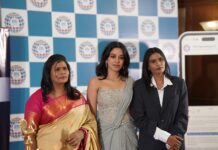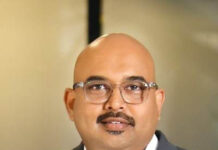India, October 28, 2025: Nitin Rawal is a seasoned User Experience (UX) designer with over 15 years of experience in Product Design, UX design, interaction design, design thinking, and Gen AI. He collaborates with leading brands, using a user-centered approach to create visually appealing, usable, and accessible products. A lifelong learner, Nitin draws inspiration from the world to craft innovative experiences that resonate with audiences. His blend of design and functionality results in intuitive interfaces, driving engagement, loyalty, and business growth. Always embracing new technologies, Nitin consistently delivers cutting-edge user experiences, ensuring he remains at the forefront of the industry. He worked with prominent clients and organisations globally, such as Deutsche Bank, Manchester United Football Club, Western Union, Schelumburger, LEGO, Great Eastern Life, HCLTech, Jabong, Groupon, and NIIT
Interview
Interviewer: Thank you for joining us today.
Tell us how you started in UX — was it always part of your plan?
Nitin Rawal: Absolutely, it’s great to be here. My journey in the design industry started over a decade ago. I initially studied graphic design and 2D animation, which were my first loves. Back then, the focus was mostly on creating visually appealing static designs and animations. It was all about the aesthetic appeal and creativity in bringing characters and visuals to life.
Interviewer: What prompted the transition to UX design, and how did you find the shift?
Nitin Rawal: The transition began when I started working with e-learning platforms. I realized that while visual appeal was important, the way users interacted with the content was crucial for effective learning. One day, I watched a user struggle to find a button — that moment stuck with me. I realized design wasn’t just about visuals; it’s about making people feel smart, confident. So I dove into usability, user research, and empathy. Leadership began when I found myself connecting design decisions to business outcomes — and wanting to help others see that thread.
Interviewer: What were some of the biggest challenges you faced during this transition?
Nitin Rawal: One of the biggest challenges was acquiring new skills. UX design involves a lot of research and understanding of user behavior, which was quite different from my previous work. Another challenge was the industry’s evolution. A decade ago, UX was not as recognized or valued as it is today. Convincing stakeholders of its importance was often difficult. Additionally, the technology was rapidly changing, so keeping up with the latest tools and trends was a constant effort.
Interviewer: How did your background in other design and creative disciplines benefit your UX design career?
Nitin Rawal: My background in graphic design and animation gave me a strong foundation in visual communication. It taught me how to create engaging and visually appealing designs, which is a crucial aspect of UX design. Animation skills also helped me understand the importance of smooth transitions and interactions, micro interactions in user interfaces. This combination of skills allowed me to create more intuitive and enjoyable user experiences.
Interviewer: You have worked across different industries, from e-learning to e-commerce and services. How has UX design evolved across these sectors?
Nitin Rawal: Each industry has its own unique challenges and requirements. In e-learning, the focus was on making content easily accessible and engaging for learners. In e-commerce, it’s about creating a seamless shopping experience that drives conversions. The service industry, on the other hand, emphasizes clarity and ease of use to ensure customer satisfaction. Across all these sectors, the core principles of UX design remain the same, but the application varies. Over the years, there has been a significant shift towards more user-centric design processes, leveraging data and user feedback to drive decisions.
Interviewer: How do you define UX strategy in real organizations?
Nitin Rawal: It’s where you answer three questions: Why are we doing this? Who is this for? How will we know it works? UX strategy is less about fancy deliverables and more about alignment. It means helping leadership see design as strategic, not decorative.
Interviewer: What do you see as the future of UX design?
Nitin Rawal: The future of UX design is incredibly exciting. As technology continues to advance, we will see more integration of artificial intelligence and machine learning to create personalized user experiences. Voice interfaces and augmented reality are also set to become more prevalent, which will open new avenues for UX designers. Additionally, there will be a greater emphasis on accessibility and inclusive design, ensuring that products are usable by everyone, regardless of their abilities. UX design will continue to evolve and expand, becoming even more integral to product development across all industries.
Interviewer: Any advice for aspiring UX designers who are just starting their careers?
Nitin Rawal: I’d say — don’t rush to master the tools; focus on mastering curiosity.
Also, get comfortable being uncomfortable. Early in your career, you’ll work with ambiguity, conflicting feedback, and projects that don’t go as planned. That’s normal — it’s where real growth happens.
Find mentors, but don’t copy them. Learn their mindset, not their methods. Build your own design voice. And remember — UX isn’t just about designing for users; it’s about advocating for them, especially when it’s inconvenient.
Finally, stay curious and humble. The moment you think you “know UX,” you’ve stopped learning it.
Interviewer: What do you look for in future UX leaders?
Nitin Rawal: I look for people who ask terrible questions. “Why do we do it this way?” “What if we did nothing?” That curiosity, that discomfort — that’s gold. Also, empathy, grit, and patience to see ideas through ambiguity.
Interviewer: How do you keep the team motivated when projects get brutal?
Nitin Rawal: We celebrate failures. I share mine openly — things I proposed, got shut down, or implemented and flopped. It builds psychological safety. I push experiment budgets: small bets, safe to fail. And I always return to the why — remind everyone of the people behind the pixels.
Interviewer: Thank you for sharing your insights and experiences with us today. It was a pleasure speaking with you.
Nitin Rawal: Thank you for having me. It was great to share my journey and thoughts on the future of UX design.
















